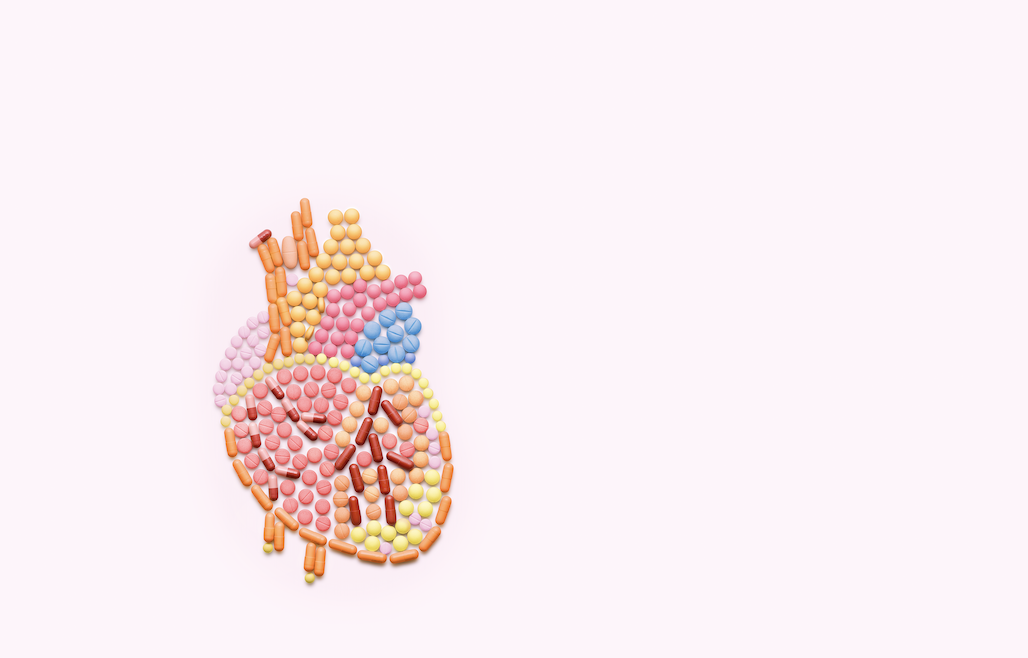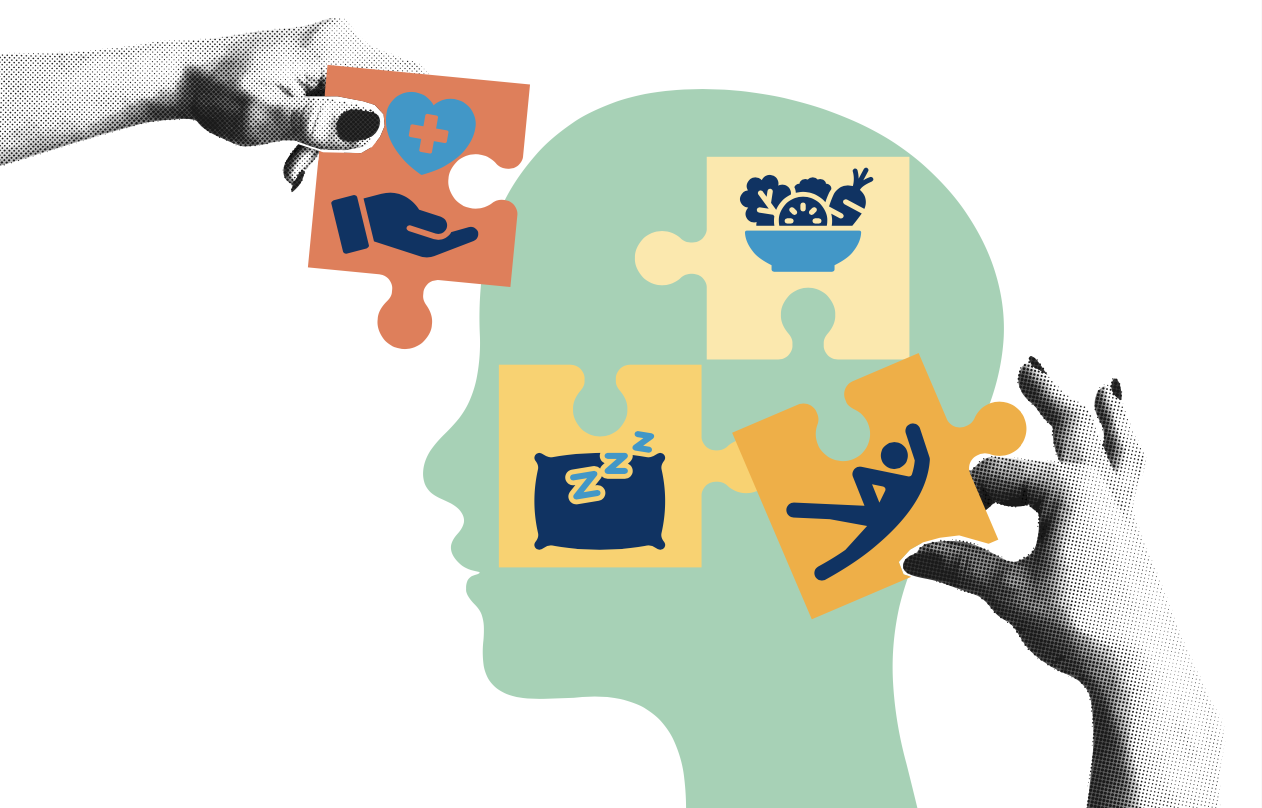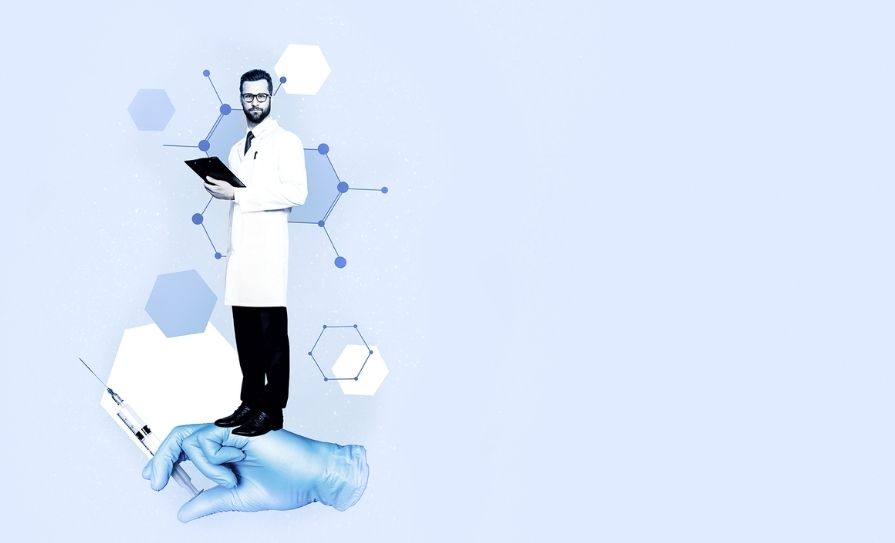Migraine is a complex neurological disorder characterised by moderate-to-severe headache episodes and often accompanied with symptoms including nausea, vomiting, and increased sensitivity to light and sound. Migraine is a debilitating condition, affecting between 10-15 per cent of the population, with approximately 17 per cent of females and 6 per cent of males affected yearly. Migraines are complex and often unfold over hours-to-days in a recurrent pattern, significantly reducing quality-of-life and productivity.
Cause and triggers
Migraine is a complex and multifactorial disorder, with genetics, environmental factors, and neurobiological components all believed to play an important role. The genetics of migraine is complex and may be based on more than one gene source at different locations acting with environmental factors, to create migraine characteristics.
The exact cause of migraine is unclear but abnormal brain processing, neuronal hyperexcitability, and altered neurotransmitter levels are thought to play a role. Several environmental factors, known as triggers, contribute to the development of migraine, with a retrospective study showing that 76 per cent of patients reported triggers. Triggers vary from probable contributing factors to others which are possible or unproven. Probable contributing factors to migraine include stress, hormonal factors, changes in weather, skipped meals, alcohol intake, and light exposure. Other factors that can trigger migraine include irregular sleep, odours, smoking, heat, certain food, physical activity, and sexual activity.
Classification
Migraines can be classified into three main subgroups, and these are outlined below:
- Migraine without aura is a recurrent headache of 4-72 hours, which is usually unilateral, pulsating, moderate-to-severe intensity, aggravated by physical activity, and associated with photophobia and phonophobia.
- Migraine with aura has recurrent and fully reversible attacks. These attacks usually have typical headache and migraine symptoms, and last minutes. They typically have one or more of the following unilateral symptoms: Visual, sensory, speech and language, motor, brainstem, and retinal.
- Chronic migraine is a headache that occurs on 15 or more days per month for more than three months. It also includes migraine features on at least eight days per month.
Presentation and symptoms
There are four main phases in migraine attacks: Prodrome, aura, headache, and postdrome. The prodrome stage usually precedes the headache by 24-48 hours and symptoms are associated with hypothalamus activation. The main traits associated with this phase are reduced energy levels, mood changes, restlessness, food cravings, and thirst. The aura phase is due to alterations in cortical function, blood circulation, and neurovascular integration – which occurs in approximately 25 per cent of migraine cases. This phase can present at the same time as the headache, or it can precede it. Symptoms are generally transient neurological symptoms and include visual disturbances, sensory changes, and motor weakness. These symptoms are usually gradual and are less than 60 minutes in duration. The headache phase is caused by further changes in blood circulation and function of the brainstem, hypothalamus, thalamus, and cortex. It is characterised by unilateral, pulsating head pain that increases within the first hours. It can last from hours to days and other symptoms can include nausea, vomiting, photophobia, and phonophobia. The postdrome phase is the final phase where symptoms persist after the primary headache has subsided. Residual headache, fatigue, and impaired cognitive function are the main symptoms associated with this.
Diagnosis
The diagnosis of migraine is generally based on a full patient history, physical examination, and fulfilment of diagnostic criteria. There is no definitive diagnostic test for migraines. Neuroimaging techniques, including magnetic resonance imaging (MRI) scans or computed tomography (CT) scans, may be useful to rule out other causes of headache, especially in patients with neurological or atypical symptoms. Examples of cases where neuroimaging techniques may be used may include sudden onset of severe headache, new neurological symptoms, not responding to treatment, duration of more than 72 hours, significant change in the frequency or severity of headaches, and symptoms associated with meningitis or stroke. The International Classification of Headache Disorders (ICHD) have established diagnostic criteria that provide guidance in the diagnosis and differential diagnosis of migraine.
Treatment
The objective of migraine treatment is to relieve the acute symptoms, prevent future migraine attacks, and improve the overall quality-of-life of patients. The main treatment approaches include acute treatment, preventive treatment, and non-pharmacological lifestyle modifications.
The aura phase is due to alterations in cortical function, blood circulation, and neurovascular integration
Acute treatment
Acute treatment focuses on relieving the acute symptoms that occur during a migraine attack. Treatment should be initiated as soon as possible and may require a combination of treatment options.
Analgesics
Paracetamol is a commonly used analgesic and has been shown to have some benefit in relieving pain in the acute treatment of migraine. Paracetamol can be obtained over-the-counter (OTC), is generally well tolerated by patients, and has a favourable adverse effect profile. Paracetamol 1g can be administered every four-to-six hours, up to a maximum of 4g in 24 hours for adults. The use of opioids in the management of migraine can be considered more controversial. Opioids may have some effectiveness in specific patients, but the evidence-based guidelines don’t recommend opioids as first-line therapy for acute treatment of migraine attacks. There is limited effectiveness of opioid use in migraine attacks while studies have demonstrated that opioid use is associated with medication-overuse headaches. There are also concerns with opioid abuse and dependence which limit the effectiveness of opioids.
Non-steroidal anti-inflammatory drugs (NSAIDs)
NSAIDs have an important role in the acute treatment of migraine. They exert their mechanism of action by blocking the cyclooxygenase enzymes, which inhibits the production of prostaglandins. Prostaglandins are inflammatory mediators that are involved in pain perception. NSAIDs also act as analgesics, as well as having anti-inflammatory properties. NSAIDs have effectiveness in reducing symptoms in the acute phase of migraine attacks. They are usually indicated in mild-to-moderate attacks, without nausea and vomiting. Ibuprofen and aspirin are NSAIDs that are available OTC, while naproxen, diclofenac, indomethacin, ketoprofen, and celecoxib are NSAIDs that are available on prescription. Adverse effects of NSAIDs can include gastrointestinal discomfort, gastrointestinal bleeding, cardiovascular problems, and renal problems. Treatment with NSAIDs may fail due to delayed gastric emptying. This can be solved by adding a prokinetic drug, such as metoclopramide or domperidone, or by switching the route of administration to the rectal or parenteral route.
Antiemetics
Antiemetic medications are very effective in treating the nausea and vomiting associated with migraines. They are often used to enhance the effectiveness of other treatment options. Therefore, antiemetics can be used as monotherapy or in combination with other therapies. Metoclopramide and prochlorperazine are commonly used prescription drugs in migraine management, while domperidone is available OTC. Adverse effects depend on the antiemetic chosen but most antiemetics are associated with an increased risk of QT interval prolongation and Torsades de Pointes, while extrapyramidal symptoms such as dystonia and tardive dyskinesia are also possible.
Triptans
Triptans are a class of drug that are effective in treating migraine with and without aura. They are often used in moderate-to-severe cases or if other treatment options have failed. They are serotonin-receptor agonists with high affinity for 5-HT1B and 5-HT1D receptors. They bind to these receptors in blood vessels causing vasoconstriction, and in the brain to inhibit pro-inflammatory mediator release. Examples of triptans on the market include sumatriptan, zolmitriptan, and frovatriptan. Sumatriptan is now licensed as pharmacy-only medicine after a structured pharmacist consultation with the patient. They are licensed to treat migraine attacks with or without aura in patients aged 18 to 65 years, where a diagnosis of migraine has been previously made by a doctor. If a patient does not respond to one triptan, they may respond to a different one in the same class and therefore treatment may be individualised. Triptans may be administered orally, parenterally, or intranasally. Their use should be limited to a maximum of 10 days per month to avoid medication overuse. If the patient is also taken selective serotonin reuptake inhibitors (SSRIs) or selective serotonin-noradrenaline reuptake inhibitors (SNRIs), they should be monitored for signs of serotonin syndrome. Potential adverse effects of triptans include chess tightness, myalgia, fatigue, flushing, dizziness, and raised blood pressure.
Preventive treatment
Preventive treatment is recommended for patients that have frequent or severe migraines, causing significant disability and reduced quality-of-life. Preventive treatment can also be used in the case of contraindication, failure, or adverse effects of acute treatment. The objective of preventive treatment is to reduce the frequency and severity of attacks, to reduce disability, and improve quality-of-life.
Propranolol, metoprolol, and bisoprolol are common beta-blockers used as first-line preventive treatment for migraine. Inhibition of noradrenaline release and tyrosine hydroxylase activity is thought to be the mechanism of migraine prophylaxis. Adverse effects of beta-blockers include fatigue, weakness, dizziness, weight gain, hypotension, bronchospasm, and bradycardia. Verapamil is a calcium channel blocker that can be used as a preventive treatment for migraine. The exact mechanism of action is unclear but it is thought that migraine severity and frequence is reduced by modulation of calcium ion influx and neurotransmitter release. Dizziness, headache, flushing, and hypotension are amongst the most common adverse effects.
Anticonvulsant medications can have effectiveness in migraine prevention. They may be particularly useful in patients with co-morbidities such as epilepsy or mood disorders. Topiramate is a commonly used anticonvulsant, while gabapentin and valproate can also be used. Multiple mechanisms are thought to contribute to their effectiveness, with modulating neurotransmitter release an important component. Depending on the anticonvulsant used, adverse effects can include dizziness, fatigue, tremors, visual disturbances, and weight loss.
Certain antidepressants have been shown to be effective in migraine prophylaxis. Amitriptyline is a tricyclic antidepressant (TCA) used for prophylactic treatment of migraine. Similar to anticonvulsant medication, its exact mechanism in migraine prevention is unclear. Adverse effects of TCAs can include dry mouth, blurred vision, constipation, urinary retention, sedation, tachycardia, weight gain, sexual dysfunction, and confusion. SSRIs and SNRIs may also be considered but evidence of effectiveness is unclear.
Monoclonal antibodies that target calcitonin gene-related peptide (CGRP) have been used for prophylactic treatment in recent years. They target the CGRP molecule or receptor and mediate the vasodilatory component of neurogenic inflammation. Erenumab, fremanezumab, and galcanezumab are examples of these drugs and are administered monthly as a subcutaneous injection. It is effective as a preventive treatment and has a favourable adverse effect profile, with local skin reactions the most common adverse effect.
Lifestyle modifications
Lifestyle modifications are an important aspect of migraine management and can help to reduce both the frequency and severity of migraine attacks. Triggers that may precipitate migraine attacks should be identified and avoided. These may include certain food, caffeine, stress, alcohol, smoking, bright lights, and strong odours. Smoking cessation programmes and support to reduce alcohol intake can be useful in this regard. Establishing a good sleep pattern is important in preventing migraines and patients should be encouraged to practice good sleep hygiene habits. Stress management techniques including meditation, yoga, and relaxation exercises may also be important in the management of migraines.
Role of the pharmacist
Pharmacists play an important role in the management of migraine and helping to improve the quality of life for migraine sufferers. Firstly, pharmacists can help tailor the pharmacological treatment, both acute and preventive, to each patient’s needs. They can monitor medication efficacy and any potential adverse effects. Patient education and counselling is another important way pharmacists can have a positive impact in migraine management. Pharmacists can provide vital education to patients about migraine, including the symptoms and stages. They can also counsel on the correct use of medication and the importance of adherence to medication. Pharmacists can give advice on the importance of avoiding triggers and non-pharmacological approaches to the management of migraine. Pharmacists can also regularly monitor their patients and provide support and follow-up as appropriate. Finally, pharmacists can effectively collaborate with other healthcare professionals to ensure an appropriate approach to migraine management that fully addresses the condition and improves clinical outcomes.







